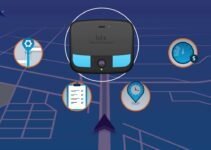There are several key steps to defend against common software code vulnerabilities. Software security vulnerabilities have been widely exploited since the internet’s earliest days. In 2022, hacking techniques, methodologies, and strategies are getting more sophisticated – making software products more vulnerable than ever before. With malicious hackers always looking to capitalize on different system weaknesses, software developers must know how to protect their digital assets. Oftentimes, this involves searching for potential bugs, testing quality, and fixing device errors. This way, you can defend your system against data breaches, unauthorized access, or sensitive information loss. Plus, you’ll safeguard your tech intellectual property and inspire user confidence. To get started now, read on to learn how to defend against common software code vulnerabilities.
Follow Coding Standards
During every stage of software development, it is important to carefully follow coding standards. Prominently, today’s security-focused teams follow regulated standard sets like the Common Weakness Enumeration (CWE) and SEI CERT C Coding Standard. Of course, the Open Web Application Security Project (OWASP) Secure Coding Practices are some of the most widely used, recognized, and followed. These different protocols help programmers accurately identify, uncover, mitigate, and eliminate hazardous system vulnerabilities. Surely, implementing and following coding standards is absolutely critical for adequate software vulnerability defense.
Install Image Scanners
Installing and using image scanners is a great software code vulnerability defense approach. Image scanners like JFrog Xray can detect any security vulnerability after your application has been packaged, containerized, and compiled. These powerful resources are especially useful for uncovering vulnerable configurations or dependencies that hackers can potentially exploit. With functionality from the JFrog platform, you’ll additionally be able to access configuration audits and penetration testing. Plus, you can run static (SAST) or dynamic (DAST) application security analysis. Of course, this will help you defend against misconfigurations, malicious code, and encryption errors. Certainly, install image scanners to defend against common software code vulnerabilities.
Establish Source Code Protection Policies
You should also establish clear, action-backed source code protection policies. In short, provide your team with a formal set of procedures, processes, rules, and requirements to adequately protect the code. This will help you safeguard the software system against malicious code tempering and reverse programming threats. Your policies should also specify key personnel members that are to be involved in the coding process. If unlisted processes get involved, they should be treated as a potential security threat. Furthermore, your source code policies should include some type of documentation. Definitely, establish source code protection policies for software code vulnerability defense.
Prepare Your Coding Team
Before the project even begins, you should prepare your coding team on software vulnerability defense practices, principles, and protocols. Coding teams must be prepared to monitor, uncover, communicate, and mitigate security vulnerabilities throughout the project lifecycle. This may require you to set training regiments, engage leadership teams, and define security benchmarks. You should also establish specific roles for vulnerability prevention, system security auditing, and periodic quality reviews. This way, you can access superior skills, more effective training, and clearer responsibilities. Absolutely, prepping the coding team is a great step to properly defending against software security weaknesses and vulnerabilities.
Require Authentication And Access Control
All strong software systems require secure authentication and access control protocols. Even the most basic access control security measures are vital for custom software projects. For a start, you need to enforce strong, impossible-to-guess passwords. In addition to hardened access codes, use regular password expiration, login recovery protocols, and multi-factor authentication (MFA). You should also enforce the principle of least privilege (POLP), encryption procedures, and user account monitoring technologies. Some secure systems even require re-authentication whenever sensitive data, payment information, or private functionalities are accessed. Indeed, authentication and access control are important for software code vulnerability defense.
There are several key steps to defend against common software code vulnerabilities. First and foremost, follow coding standards from the very beginning of the process. In 2022, the OWASP, CWE, and SEI CERT C Coding Standard will be some of the most popular frameworks. In addition, install robust, dependable image scanners. You should also explore different techniques for system authentication and access control. More implement action-driven source code protection policies. Another important responsibility is to require authentication and access control. Of course, you should always take time to prepare your coding team before the actual development stage begins. This gives you an opportunity to communicate needs, vulnerability identification protocols, and security requirements. Follow the points highlighted above to learn how to defend against common software code vulnerabilities.



